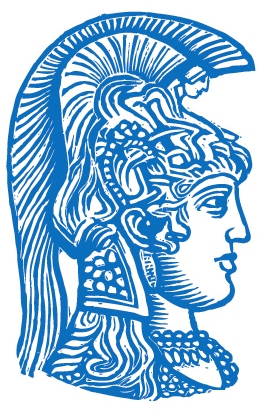 National and Kapodistrian University of Athens
Department of Biology
Biophysics & Bioinformatics Laboratory
National and Kapodistrian University of Athens
Department of Biology
Biophysics & Bioinformatics Laboratory
Protein Information |
|
|---|---|
| Protein Name | SUN domain-containing protein 1 |
| Accession Code | Q9D666 |
| Gene | Sun1 |
| Organism | Mus musculus | House mouse (Taxonomy: 10090) |
| Part of Reference Proteome? | Yes |
| Sequence (Length: 913) |
Structure Viewer (PDB: 5YWZ) |
|---|
Description |
Position in the Nuclear Envelope |
|
|---|---|---|
| Location | Location ID | Description |
| Nuclear Envelope | SL-0178 | The nuclear envelope is a membrane system which surrounds the nucleoplasm of eukaryotic cells. It is composed of the nuclear lamina, nuclear pore complexes and two nuclear membranes. The space between the two membranes is called the nuclear intermembrane space. |
| Nuclear Inner Membrane | SL-0179 | The inner membrane of the nucleus is the membrane which separates the nuclear matrix from the intermembrane space. In mammals, the inner nuclear membrane is associated with heterochromatin and the nuclear lamina. |
| Nuclear Membrane | SL-0182 | The membrane surrounding the nucleus. This term is used when it is not known if the protein is found in or associated with the inner or outer nuclear membrane. | Membrane Topology |
| Topology | Source | Annotation Type |
| Transmembrane | UniProt | Sequence Analysis | Assigned Ontology terms |
Description |
|
|---|---|
| As a component of the LINC (LInker of Nucleoskeleton and Cytoskeleton) complex involved in the connection between the nuclear lamina and the cytoskeleton (PubMed:20711465, PubMed:16380439, PubMed:24062341, PubMed:25892231, PubMed:26842404). The nucleocytoplasmic interactions established by the LINC complex play an important role in the transmission of mechanical forces across the nuclear envelope and in nuclear movement and positioning (PubMed:19874786). Required for interkinetic nuclear migration (INM) and essential for nucleokinesis and centrosome-nucleus coupling during radial neuronal migration in the cerebral cortex and during glial migration (PubMed:19874786). Involved in telomere attachment to nuclear envelope in the prophase of meiosis implicating a SUN1/2:KASH5 LINC complex in which SUN1 and SUN2 seem to act at least partial redundantly (PubMed:17543860, PubMed:19211677, PubMed:19509342, PubMed:24062341, PubMed:25892231, PubMed:26842404). Required for gametogenesis and involved in selective gene expression of coding and non-coding RNAs needed for gametogenesis (PubMed:17543860). Helps to define the distribution of nuclear pore complexes (NPCs) (PubMed:17724119). Required for efficient localization of SYNE4 in the nuclear envelope (PubMed:23348741). May be involved in nuclear remodeling during sperm head formation in spermatogenesis (PubMed:20711465). May play a role in DNA repair by suppressing non-homologous end joining repair to facilitate the repair of DNA cross-links (By similarity). {By SimilarityUniProtKB:O94901, Experimental EvidencePubMed:16380439, Experimental EvidencePubMed:17543860, Experimental EvidencePubMed:17724119, Experimental EvidencePubMed:19211677, Experimental EvidencePubMed:19509342, Experimental EvidencePubMed:19874786, Experimental EvidencePubMed:20711465, Experimental EvidencePubMed:23348741, Experimental EvidencePubMed:24062341, Experimental EvidencePubMed:25892231, Experimental EvidencePubMed:26842404}. Isoform 5 may be involved in nuclear remodeling during sperm head formation in spermatogenesis. A probable SUN1 isoform 5:SYNE3 LINC complex may tether spermatid nuclei to anterior cytoskeletal structures such as actin filaments present at membraneous junctions of spermatids and Sertoli cells. {Curator InferencePubMed:20711465}. | Assigned Ontology terms |
Interactions with Nuclear Envelope proteins (6 interactors) |
|||
|---|---|---|---|
Interactions with other proteins (1 interactors) |
|||
Database | Links |
| UNIPROT | Q9D666 D3Z0V9 Q3TIW3 Q3TV96 Q6B4H0 Q80SU8 Q8BZ99 Q99P23 |
| PDB | 5YWZ |
| Pfam | PF18580 PF09387 PF07738 |
| PROSITE | PS51469 |